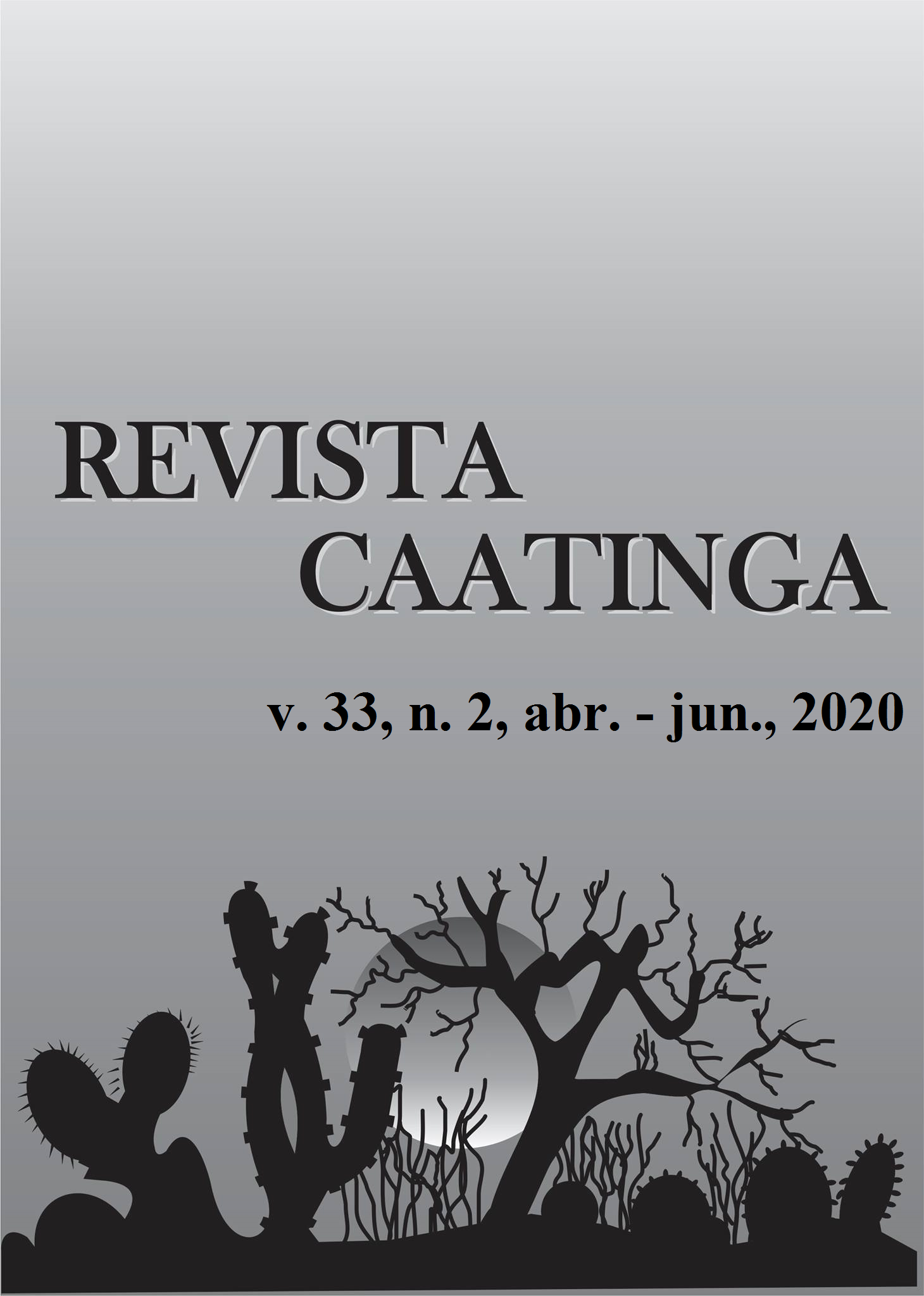CORRELATION BETWEEN SOWING AND FERTILIZER APPLICATION SYSTEMS AND WEEDS IN SOYBEAN CROPS
DOI:
https://doi.org/10.1590/1983-21252020v33n201rcKeywords:
Spacing between rows. Soil fertility. Yield components. Weed incidence.Abstract
The objective of this study was to evaluate the effects sowing systems and fertilizer application systems on the incidence of weeds and on yield components in soybean crops. Two experiments were conducted in soils with different fertility levels. An experimental design in split-plot was used; the plots consisted of four sowing systems: crossed sowing (0.45×0.45 m), and spacings between rows of 0.35 m, 0.175 m, and 0.45 m; and the subplots consisted of fertilizer application systems: application in the sowing row, broadcast fertilizer application at sowing, and no fertilizer application. The variables evaluated were: grain yield, 1000-grain weight, and weed incidence at 30 and 50 days after sowing (DAS). The weed incidence at 30 DAS was lower when using spacing between rows of 0.45 m, which was correlated with the lower turning of the soil surface layer. The plant spacing between rows of 0.175 m resulted in a lower competition with weeds at 50 DAS and in a higher shading, generating higher grain yields. The fertilizer application in the sowing row resulted in a higher grain yield and 1000-grain weight. The sowing system affects the weed population dynamics, which directly affects the grain yield of soybean crops.
Downloads
References
BALBINOT JUNIOR, A. A.; FLECK, N. G. Competitividade de dois genótipos de milho (Zea mays) com plantas daninhas sob diferentes spacings entre fileiras. Planta Daninha, 23: 415-421, 2005.
BATISTELLA FILHO, F. et al. Adubação com fósforo e potássio para produção e qualidade de sementes de soja. Pesquisa Agropecuária Brasileira, 48: 783-790, 2013.
BIANCHI, M. A. et al. Papéis do arranjo de plantas e do cultivar de soja no resultado da interferência com plantas competidoras. Planta Daninha, 28: 979-991, 2010.
BRAGA, R. R. et al . Ocorrência de plantas daninhas no sistema lavoura-pecuária em função de sistemas de cultivo e corretivo de acidez. Revista Ceres, 59: 646-653, 2012.
CHAUHAN, B. S. et al. Implications of narrow crop row spacing in managing weeds in mungbean (Vigna radiata). Crop Protection, 95: 116-119, 2017.
FALKOSKI FILHO, J. et al. Rendimento de grãos de soja em diferentes arranjos espaciais. Agrarian, 6: 107-109, 2013.
HATCHER, P.; FROUD-WILLIAMS, R. J. Weed Research: expanding horizons. 1. ed. New York, NY: Willey, 2017, 456 p.
HECKMANN, J. R.; KAMPRATH, E. J. Potassium accumulation and corn yield related to potassium fertilizer rate and placement. Soil Science Society of American Journal, 56: 141-148, 1992.
HOCK, S. M. et al. Soybean row spacing and weed emergence time influence weed competitiveness and competitive indices. Weed Science, 54: 38-46, 2006.
JUGULAM, M. Biology, Physiology and Molecular Biology of Weeds. 1 ed. Boca Raton: CRC Press LLC, 2017, 230 p.
KOMATSU, R. A. et al. Efeito do espaçamento de plantas sobre o comportamento de cultivares de soja de crescimento determinado. Campo Digital, 5: 50-55, 2010.
NKEBIWE, P. M. et al. Fertilizer placement to improve crop nutrient acquisition and yield: A review and meta-analysis. Field Crops Research, 196: 389-401, 2016.
MAEHLER, A. R. et al. Qualidade de grãos de duas cultivares de soja em função da disponibilidade de água no solo e arranjo de plantas. Ciência Rural, 33: 213-218, 2003.
MOORE, S. H. Uniformity of planting spacing effect on soybean population parameters. Crop Science, 31: 1049-1051, 1991.
RAMBO, L. et al. Estimativa do potencial de rendimento por estrato do dossel da soja, em diferentes arranjos de plantas. Ciência Rural, 34: 33-40, 2004.
RASOOL, G et al. Row spacing is more important than seeding rate for increasing Rhodes grass (Chloris gayana) control and grain yield in soybean (Glycine max). Crop and Pasture Science, 68: 620-624, 2017.
SANGOI, L. et al. Efeito de doses de cloreto de potássio sobre a germinação e o crescimento inicial do milho, em solos com texturas contrastantes. Revista Brasileira de Milho e Sorgo, 8: 187-197, 2010.
SMITH, J. Weed Biology. 1 ed. New York: Syrawood Publishing House, 2016. 217 p.
THEISEN, G.; BIANCHI, M. Semeadura com pouco revolvimento de solo como auxílio no manejo de plantas daninhas em milho. Planta Daninha, 28: 93-102, 2010.
VENTIMIGLIA, L. A. et al. Potencial de rendimento da soja em razão da disponibilidade fósforo no solo e dos spacings. Pesquisa Agropecuária Brasileira, 34: 195-199, 1999.
Downloads
Published
Issue
Section
License
Os Autores que publicam na Revista Caatinga concordam com os seguintes termos:
a) Os Autores mantêm os direitos autorais e concedem à revista o direito de primeira publicação, com o trabalho simultaneamente licenciado sob a Licença Creative Commons do tipo atribuição CC-BY, para todo o conteúdo do periódico, exceto onde estiver identificado, que permite o compartilhamento do trabalho com reconhecimento da autoria e publicação inicial nesta revista, sem fins comerciais.
b) Os Autores têm autorização para distribuição não-exclusiva da versão do trabalho publicada nesta revista (ex.: publicar em repositório institucional ou como capítulo de livro), com reconhecimento de autoria e publicação inicial nesta revista.
c) Os Autores têm permissão e são estimulados a publicar e distribuir seu trabalho online (ex.: em repositórios institucionais ou na sua página pessoal) a qualquer ponto antes ou durante o processo editorial, já que isso pode gerar alterações produtivas, bem como aumentar o impacto e a citação do trabalho publicado (Veja O Efeito do Acesso Livre).







